 Last month, I described some of the high points (and hapless incidents) I encountered during my research odyssey for Time of Departure. Today, I’ll describe some of the travels, insights, and adventures that contributed to Storm Rising, my second novel with Macmillan.
Last month, I described some of the high points (and hapless incidents) I encountered during my research odyssey for Time of Departure. Today, I’ll describe some of the travels, insights, and adventures that contributed to Storm Rising, my second novel with Macmillan.
I won’t put you into a coma by rehashing the non-fiction sources I plowed through to transform my heroine Lucy Hendricks’s story from a “what if?” idea bouncing around my imagination to a 350-page manuscript. And there simply isn’t space to detail my interactions with one of the most fascinating academics I’ve ever encountered: Dr. Jim Tucker, Director of the Division of Perceptual Studies at the University of Virginia School of Medicine. Professor Tucker’s scientific studies of the childhood cognitive phenomenon that anchored one of the central themes of the novel was invaluable. His assistance provides a clear example of why it is so important to track down and interview experts in fields of study beyond your own radius of experience.
(To get a full sense of the range of people I consulted in developing the factual background to Storm Rising, I invite the reader to take a few moments to digest the Acknowledgements section at the end of the novel.)
Now, let’s jump to the fun stuff…
In terms of travel, Storm Rising took me and my wife Melody to New Jersey, Florida (one of many visits to the Sunshine State—see Part I of this series), and twice across the Atlantic to that fabled gem of the Italian Messogiorno, Sicily. Much of our time was spent exploring and photographing locations for the story I was constructing in my head. Although every place we visited was engaging in its own way, a handful were truly special and stand out in our memories.
For this installment of Adventures in Research, I have singled out three such locations: two in New Jersey and one in central Sicily.
New Jersey
Those of you who have read Storm Rising will recall that several pivotal scenes are set in the Hudson County Prosecutor’s satellite office in Jersey City. As mentioned in the novel, that office complex is situated in the last place any TV fan would expect to find it—in a weather-stained building two miles from the courthouse, buried in an industrial area on the shores of the Hackensack River, in the shadow of the Pulaski Skyway. Here’s the view from the window of the office I assigned to prosecutor Robert Olivetti, one of the novel’s main characters:

No, I’m not kidding.
Our visit to this off-beat prosecution facility was arranged by a law enforcement friend who must remain anonymous. Why? Because he or she happens to be a veteran of several federal undercover operations against organized crime (once again, the reader is referred to the notes at the end of the novel, where tribute is paid to this valiant officer). My wife and I were greeted at the facility by Sgt. Maria Dargan, whose helpful and informative tour left virtually nothing out.
Not the investigators’ squad room:
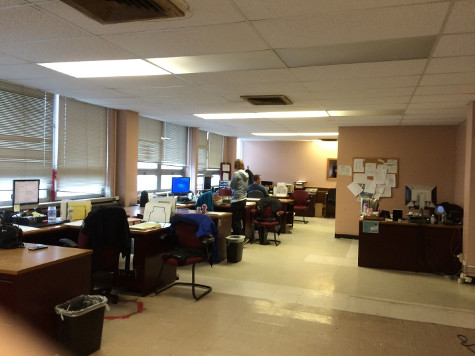
Nor the holding cell:
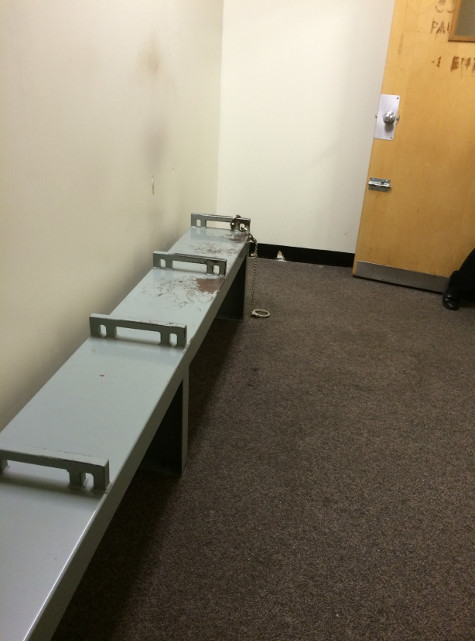
Nor even the exhibit vault (photography not permitted).
For the aspiring novelist, there is a lesson here: It’s not real if you’ve only seen it on TV. Want to write a crime novel? Get out there and meet cops. Tell them you’re writing a book, and don’t be shy about asking for help. You will be astonished at the kindness and generosity of the men and women in law enforcement, many of whom will go out of their way to assist you. If it wasn’t for people like Sgt. Dargan—a police officer, I emphasize, who had never met me or Melody before the day of our tour and who accepted us solely on the assurance of another officer—we would never have made it past the front door of that building.
On a lighter note—and once again on the recommendation of a local cop—we discovered The Starting Point Bar and Grill. This establishment is tucked away at Bergen Point, the southern-most extremity of the peninsula occupied by the City of Bayonne, New Jersey. If it hadn’t been for Sgt. David Conte of the Bayonne Police Department, we wouldn’t have given the place a moment’s thought.
This photograph gives you an idea why:
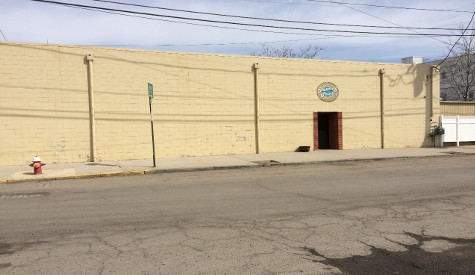
Seriously? What is that? A warehouse?
Let’s take a peek inside:

I took one look around and realized that the table right over there—the one in that far corner on the left—would make a perfect setting for Lucy Hendricks’s first out-of-office rendezvous with Hudson County Prosecutor Robert Olivetti.
There they would sit, I thought, nursing drinks and feeling each other out, surrounded by album covers from the glory days of vinyl:
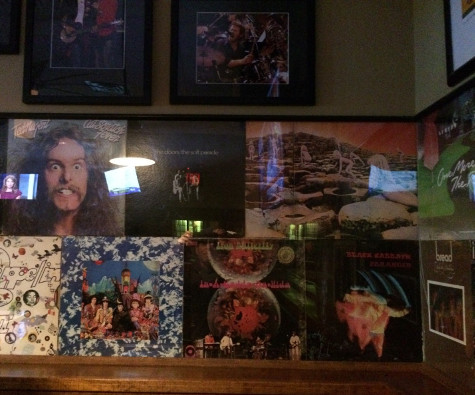
For those two characters, in that story, no location could have been more fittingly and deliciously counterintuitive.
In mystery novels, counterintuitive is good.
And, as Melody and I learned during … um … okay … a few visits, The Starting Point isn’t just a bar, it’s an experience. (You will not believe the meatloaf platter!) That is why I made it a point to mention Susan Metelski, the bartender, in the end notes of the novel. This colorful lady helped make each of our visits an adventure in itself.
Sicily
The final stop on our mini-tour of Storm Rising is a location that lies in stark and somber contrast to the New Jersey venues we have just visited.
Welcome to Palazzo Pennisi, in the Province of Enna in central Sicily.
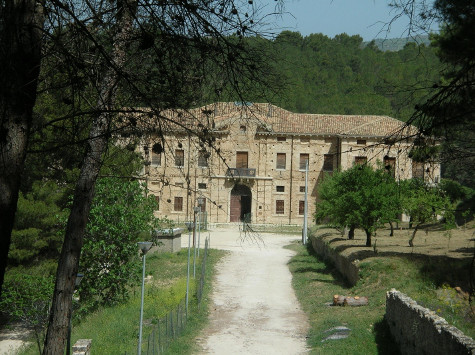
This brooding structure, along with its vast surrounding estate, represents one of the most important industrial/archaeological sites in Italy. And it has a dark history. For decades after it was built in the 1870s, it became the graveyard of hundreds, if not thousands, of Sicilian male children.
To help explain that statement, here is the view from the rear of the building:
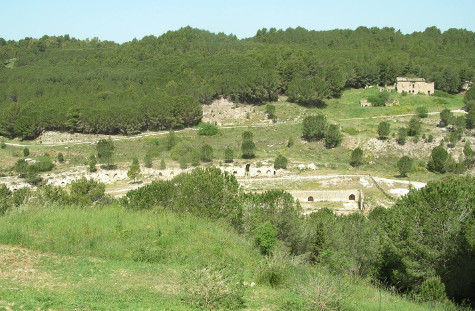
You are looking at the valley of the Rio Floristella. It was here that boys as young as the age of six were sent to work in the sulfur mines that once dotted this landscape. These were boys who had been sold into virtual slavery by their poverty-stricken parents in return for small loans of money from the Pennisi family, the owner of the mines. In local dialect, these loans were called soccorso morto.
“Death loans.”
They were called that for good reason. Upon payment of these small sums to their parents, the children were turned over to the Cosa Nostra overseers who ran the mines on the Pennisi family’s behalf. Thus began a period of servitude that would never end, because neither the parents nor the victimized child could ever accumulate enough money to repay the original loan.
The verdant scene you see in the photograph above (taken in 2015 during our second visit) was, for nearly a century, a blasted, sulfur-scorched Valley of Death. Those hills in the distance conceal the entrances to dozens of now-abandoned sulfur mines. We’re not talking about the sturdily reinforced mine entrances of popular conception, such as the ones you see in old photographs from the American West.
Not at all.
We’re talking about mine entrances like this:
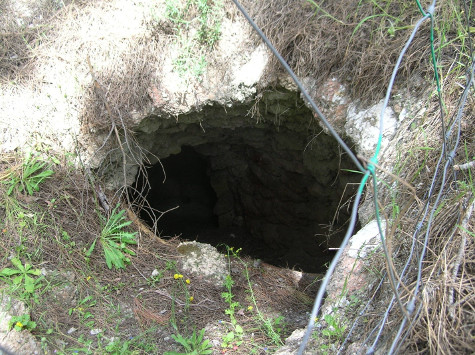
These burrows were called decentiria—insufferably narrow passages hacked into the native rock, leading deep underground to hot, stinking galleries where these boys (known in local dialect as carusi) were forced to work, eat, and sleep, often without visiting the surface for days at a time.
American readers may recognize the name Booker T. Washington. Mr. Washington was born into slavery in 1856. He was nine years old when he gained his freedom, and he eventually went on to prominence as a teacher and man of letters. In 1910, Mr. Washington traveled extensively in Europe. His itinerary included a visit to an operating sulfur mine in Sicily.
This man, a former slave from the American South, could not believe his eyes. Here are a few selected quotes from his 1912 treatise, The Man Farthest Down:
“One sees processions of half-naked boys, their bodies bowed under the heavy weight of the loads they carry, groaning as they make their way up out of the hot and sulfurous holes in the earth, carrying ore from the mine to the smelter.
The cruelties to which these child slaves have been subjected, as related by those who have studied them, are as bad as anything that was ever reported of the cruelties of Negro slavery. These boy slaves are frequently beaten in order to wring from their overburdened bodies the last drop of strength they have in them . . . It is not surprising, therefore, that they early gain the appearance of gray old men, and that a caruso rarely reaches the age of twenty-five.
I am not prepared just now to say to what extent I believe in a physical hell in the next world, but a sulfur mine in Sicily is about the nearest thing to hell that I expect to see in this life.”
During two separate private tours of Palazzo Pennisi with Genny Trovato, our knowledgeable Sicilian guide, one interesting sidelight to the property’s shameful history caught my attention. It seems that, right from the beginning, the mines’ owners and the criminal overseers they employed were fully alive to the danger to themselves that their brutal regime might provoke. With those uncertainties in mind, they took steps to protect themselves against any potential strikes, riots, or insurrections—both from within the property, where many adult miners (known as picuneri) also labored under merciless conditions and from the surrounding communities that supplied the labor force.
What steps did they take?
From its inception, Palazzo Pennisi was designed and built to be an impregnable fortress. Its two-foot thick walls feature hundreds of gun slits, and the building features several secret passages, cut through the underlying ridge, thereby providing multiple avenues of escape should the palace’s formidable defenses ever be breached.
In other words, I couldn’t have dreamed up a more suitable setting for the final scenes of Storm Rising.
To learn more or order a copy of the upcoming Killing Pace, visit:
Douglas Schofield is the author of Time of Departure and Storm Rising. He was raised and educated in British Columbia, where he earned degrees in history and law. Over the past thirty years, he has worked as a lawyer in Canada, Bermuda, and the Cayman Islands. Douglas and his wife, Melody, live on Grand Cayman, along with their most excellent and amazing talking cat, Juno.

in the photo, people spend time in pubs, and now, due to the pandemic, land-based casinos have been replaced with online entertainment